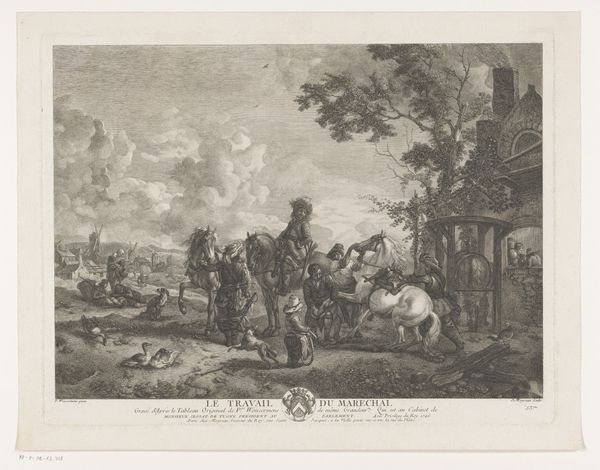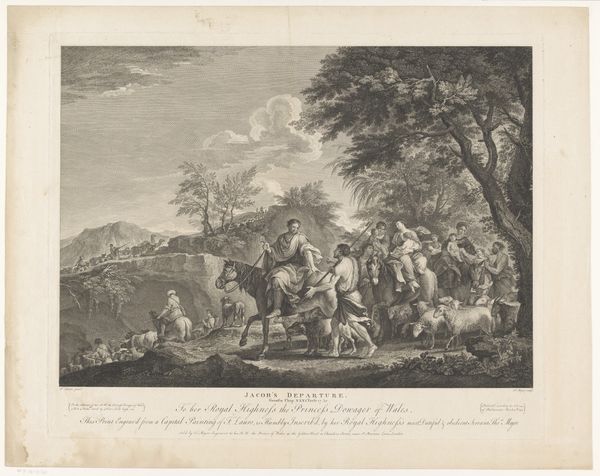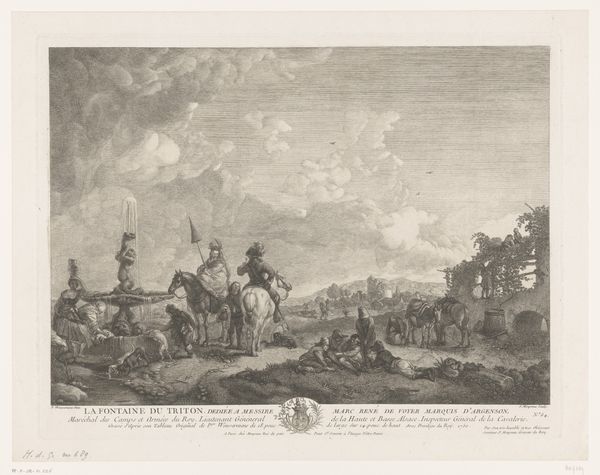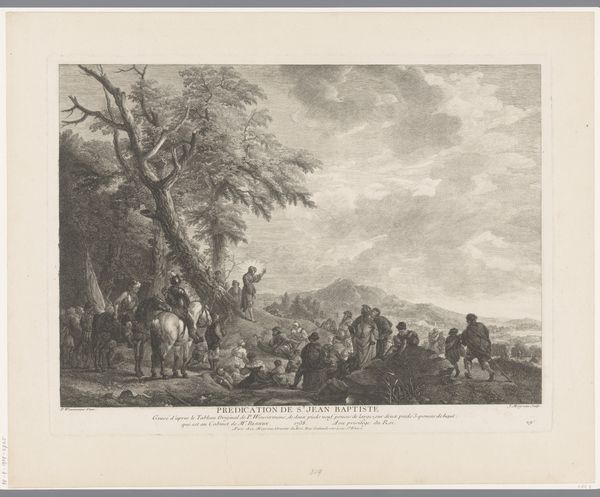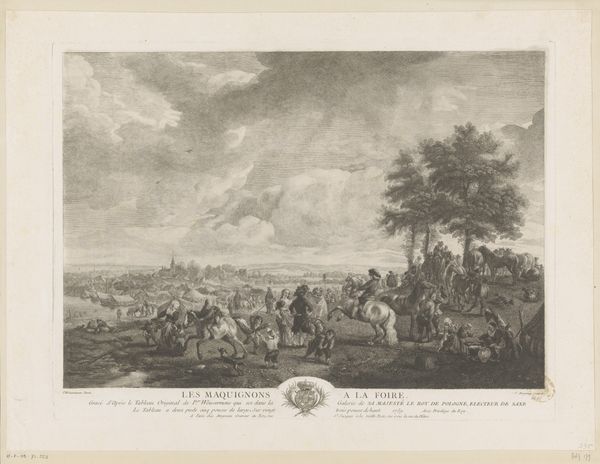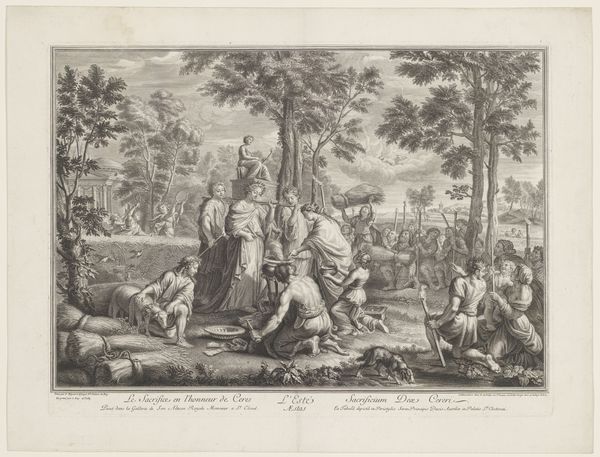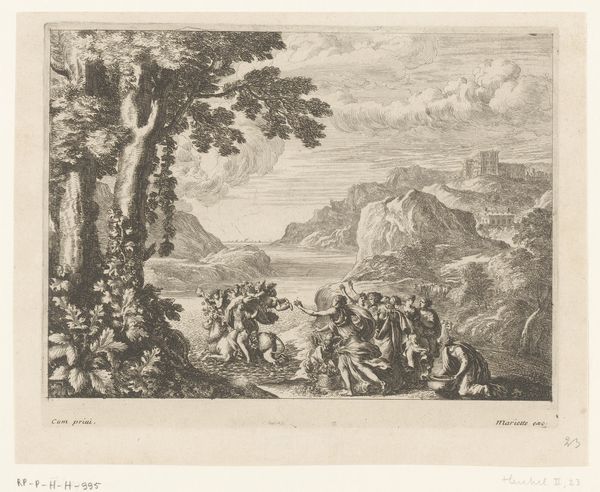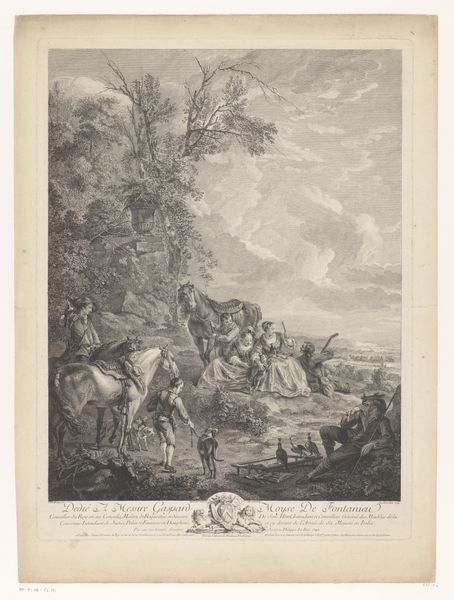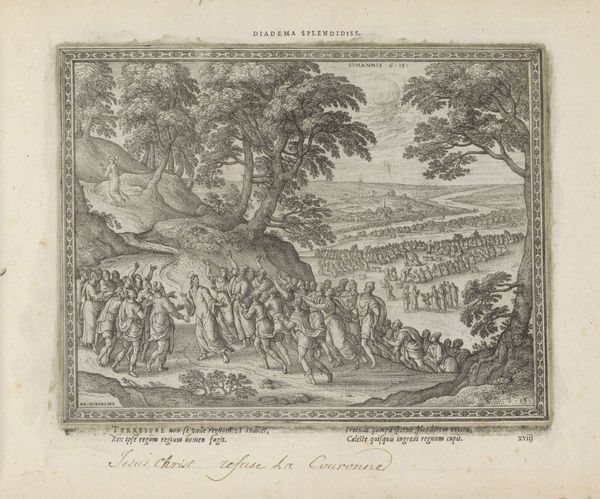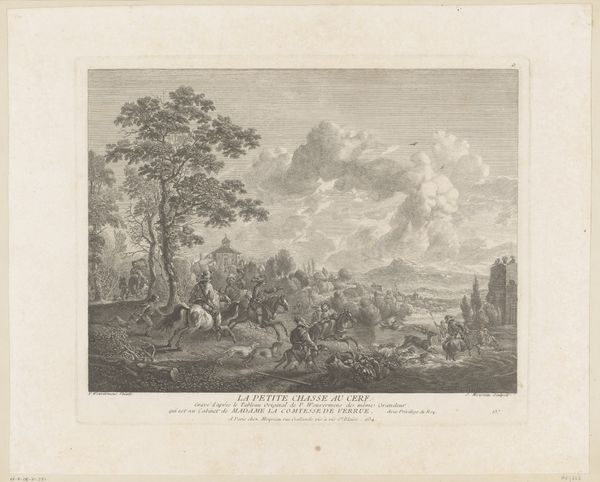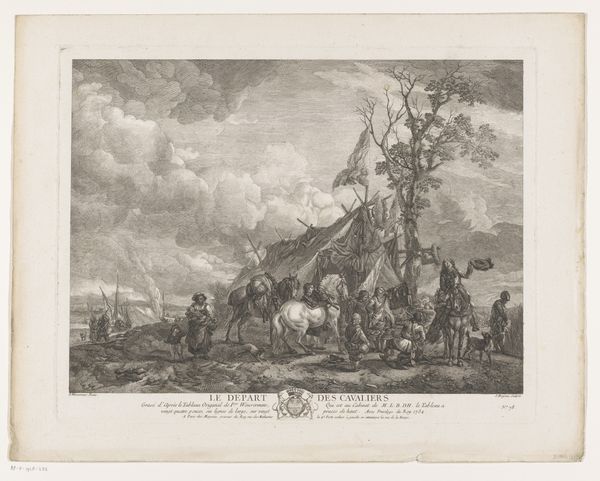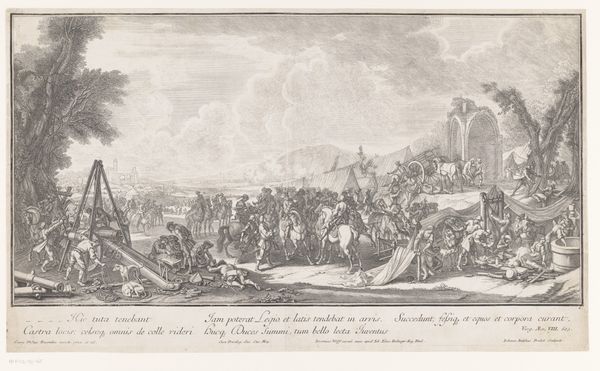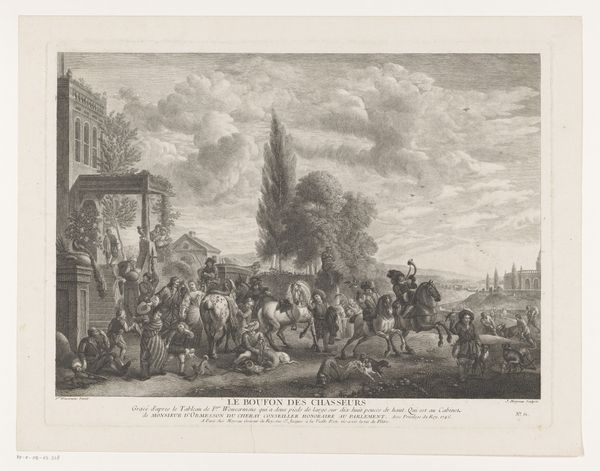
print, engraving
#
baroque
# print
#
old engraving style
#
landscape
#
genre-painting
#
history-painting
#
engraving
Dimensions: height 367 mm, width 471 mm
Copyright: Rijks Museum: Open Domain
Curator: Ah, here we are in front of "Soldaten en aanvoerders in een legerkamp," or "Soldiers and Commanders in an Army Camp," an engraving from around 1751 to 1762. Jean Moyreau created this scene—doesn't it just capture that sense of perpetual movement, even in what's supposed to be a temporary camp? Editor: It feels less temporary, more entrenched. Look at the incredible detail—almost like a photograph documenting labour. Every person is engaged in some act of work, directly supporting war or resting briefly from it. Even the tents appear quite weathered and firmly planted. Curator: Yes, that laboriousness is palpable, isn't it? The Baroque flourish evident here in the sheer activity and detail almost feels like a glorification of, dare I say, military bureaucracy. Editor: Glorification is a loaded word. To me, it highlights the infrastructure that supports it. We’re not looking at a romantic battlefield, but the engines that require material and manpower—consider the logistical planning that would have been necessary. Look how many soldiers we can count! Curator: Absolutely, a stark departure from heroic renderings, almost mundane at times. Notice the composition, it pulls the viewer into the scene in such an engaging way! Do you think Moyreau, primarily known for these landscapes, was trying to emphasize this human-element over some grandiose battle? Editor: Exactly. I'm more interested in the materiality: the paper, the ink, the plates used to produce it – all commodities of the 18th century. These prints, once circulated, themselves become instruments perpetuating specific attitudes toward labor, warfare and consumption. It is itself an industry, literally providing propaganda by multiplying scenes like this. Curator: Hmm. Well, whether propagandistic or documentarian, there's certainly a somber reflection there. I feel the artist makes us dwell on the implications of military campaigns. Editor: Agreed. Ultimately, we must look critically at not only the depiction of the subjects represented in the image but also, and maybe even more so, the means of the engraving production. Curator: A fine point indeed, shifting the discussion and leaving our guests with a richer understanding and many aspects to consider! Editor: Indeed. An expanded insight of material consequences lets you interpret art not as timeless depictions, but rather artifacts tied to a time period, made of materials.
Comments
No comments
Be the first to comment and join the conversation on the ultimate creative platform.
